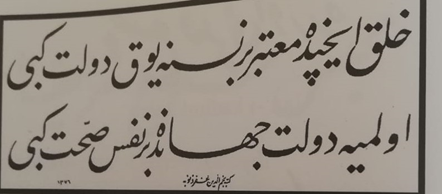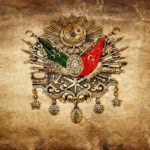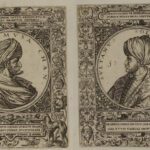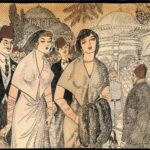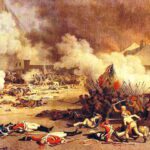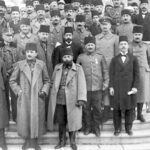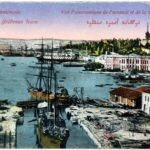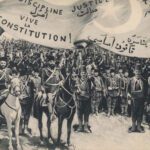The type of writing used for decoration during the Ottoman period reflects the cultural heritage of a society that attached great importance to aesthetic and artistic values. These types of writing appear in many fields, from architecture to handicrafts. Especially calligraphy is one of the most important decorative elements of the Ottoman period.
Calligraphy is a branch of art that emerges by writing words and letters in an aesthetic way. The types of writing used in Ottoman calligraphy served a decorative function, especially in mosques, tombs, palaces and other public buildings.
What is Divani Writing?
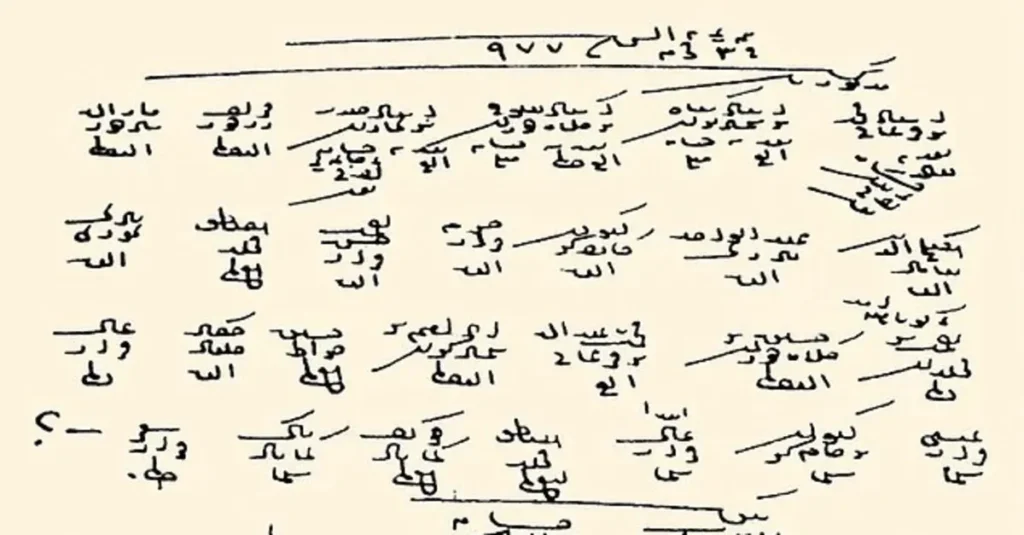
Divani script is a type of writing that has an important place in Ottoman calligraphy. This script was used especially in official documents and government offices. The Divani script has a fluent and elegant structure and is in a form where the letters are connected to each other.
Its development began in the 16th century during the reign of Ottoman Sultan Mehmet III and has become even more aesthetic over time. The Divani script attracts attention with its elegant curves and rounded lines. This type of writing was frequently preferred throughout the Ottoman period, especially in government offices and official correspondence.
What are the Ottoman Writing Types?
Ottoman Turkish has a language structure that includes many different types of writing. The most well-known Ottoman writing types are:
- Divani is an elegant type of writing frequently used in official correspondence and documents.
- Thuluth font is a writing style in which larger and more prominent letters are used. It is especially common in inscriptions in mosques and tombs.
- Celi Thuluth is a larger and more flamboyant form of thuluth writing. It was generally preferred in important documents and artistic works.
- Ta’lik, which has a more oblique writing style, was used especially in daily correspondence.
- This type of writing, which has a Kufi, geometric and upright structure, is mostly seen in works engraved on stone and metal.
What is the Ottoman Art of Writing Called?
The art of Ottoman writing is often referred to as “calligraphy”. Calligraphy is an art that aims to write words aesthetically. Ottoman period calligraphy artists prioritized the aesthetics of writing, making letters and words look like works of art.
Calligraphy, combined not only with writing but also with the art of calligraphy, laid the groundwork for the creation of various works of art and decorative elements. Among the most important representatives of the art of calligraphy are names such as İsmail Zühtü from Amasya, Sheikh Hamdullah and Kazasker Mustafa İzzet Efendi.
What script did the Ottomans use?
The Ottoman Empire used the Ottoman script, which is based on the Arabic alphabet, in its official documents and government offices. This script was formed by adding some letters to adapt to the sound structures of Turkish as well as the Arabic alphabet. Ottoman is a language in which both Arabic and Persian words are used extensively. Therefore, Ottoman writing has a rich vocabulary and is frequently encountered in literary works and official documents. In addition to official documents, Ottoman Turkish has also been used in the works of poets, literary texts, and other artistic fields.
What is the Official Letter of the Ottoman Empire?
The official script of the Ottoman Empire is generally the “Divani” and “Thuluth” scripts. While the Divani script is frequently used in official documents and correspondence, the thuluth script is preferred in important documents because it has a larger and more distinct structure. The writing rules and format in official documents are meticulously determined to reinforce the prestige and authority of the state. In addition to these types of writing, the aesthetics of calligraphy art also had an important place in the official correspondence of the Ottoman Empire.
Ottoman writing art is more than just a means of communication, it also carries a cultural heritage and aesthetic value. While these writing genres reflect the richness and diversity of Ottoman culture, they still maintain their importance as an artistic and historical value today.
Resources
- https://tr.wikipedia.org/wiki/Osmanl ı_kültürü#:~:text=Divani%20handwriting%20Arab%20calligraphy%20writing,until%20%20in the description of his%20%20is used.
- https://bukiminurunu.com/osmanlilar-zamaninda-dekorasyon-amacli-kullanilan-yazi-turu-hangisidir/
- https://asiyansanat.com/hat-yazisi-cesitleri-turleri?srsltid=AfmBOopV84oJJHScEzvhrD4M7w8pDgGSme3l_todaGnfV6Q33ilwigwM
